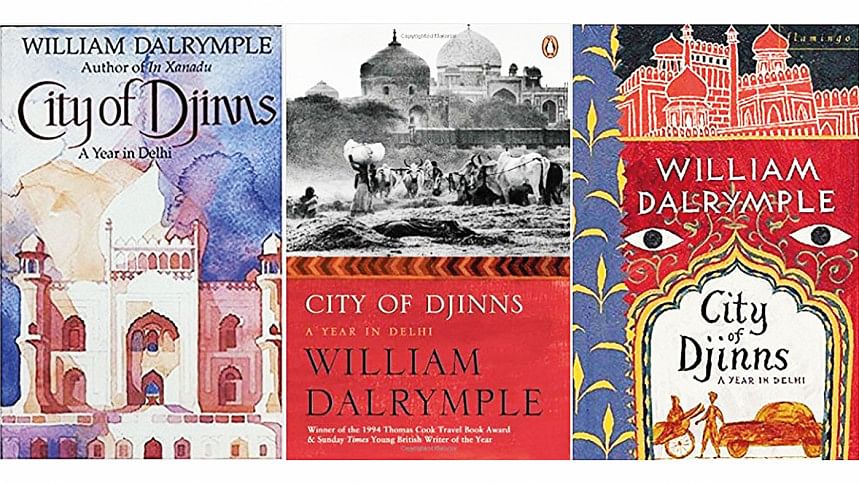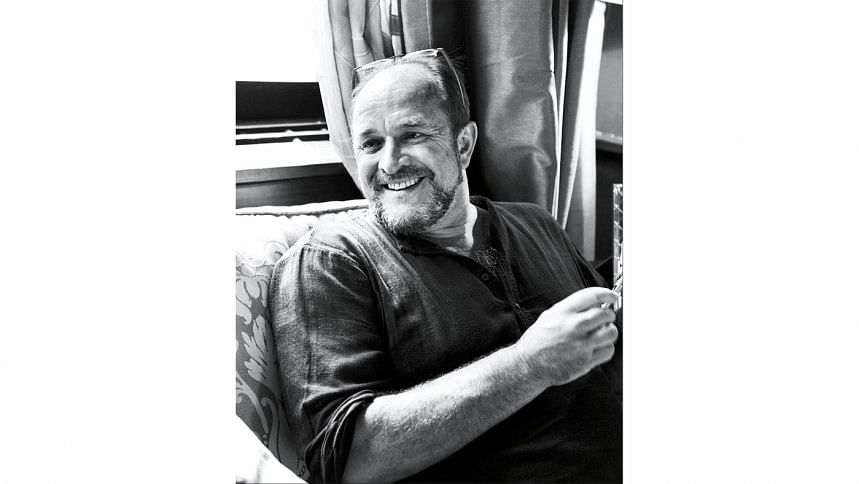“I also have Bengali blood in my veins”

It was November 18, 2017, when the Delhi-based Scottish historian William Dalrymple came to participate in the 'Dhaka Lit Fest.' Ridwan Akram spoke to the author of the books, White Mughals and The Last Mughal. This interview throws light on Mr. Dalrymple's thoughts, writing, personal life, and Indian history. Even though it has been a while, this interview brings out some significant history of Bengal.
Ridwan Akram: Your first four books are all about travel. Why did you suddenly change your field of acquaintance and write history?
William Dalrymple: At first, I moved around a lot. I used to collect writing material while writing. I traveled around the world for two decades before my first child, Ibby, was born. As a war correspondent. I had to go to Sri Lanka, Kashmir, and Palestine. The age was such that it felt good to dodge bullets. But that is not possible all the time. Our daughter Ibby was born in 1994. My second book City of Jeans: A Year in Delhi was published that year. That's when I felt that I should settle down somewhere, even for the sake of the child. I wanted to see my children grow up. And a stable job was also needed. If you notice carefully, you will see that history comes in my travel books. And my history books also talk about travel. So, it cannot be said that the field has changed a lot.
RA: Your first history book White Mughals came out in 2002. How did you get interested in writing this book?
WD: The book is not about the famous Mughals of Delhi, even though it has Mughals in the title. Venue Hyderabad. Lieutenant Colonel James Achilles Kirkpatrick (1764-1805), a high-ranking officer of the East India Company, falls in love with Khair-un-Nissa, a high-born Mughal woman. James converted to marry her. Their love story created quite a stir at that time (the 1800s). Kirkpatrick continued his association, even though the officers of the East India Company did not like it much. His responsibility was to look after the interests of the East India Company and the affairs of the Nizam of Hyderabad, the ruler of Hyderabad. But James was more loyal to the Nizam. So, I came to know about this gentleman during my trip to Hyderabad. I found the 'Kirkpatrick Papers' on inquiry at the India Office. These included correspondence between himself and his brother and other documents. I worked on Kirkpatrick for two years. The result is White Mughals.

RA: How would you like to introduce the book? Is it a political history or a love story of a man and a woman from the East and the West?
WD: Actually, through this book I wanted to write a social history of the time. You can also call it a political history. So, I wanted to show how the British established contact with Indian society.
RA: By writing this book, you found an ancestor of your own who like Kirkpatrick married a Mughal woman. As such, you can call yourself a Mughal too?
WD: Ha ha ha! You can say that. I also have Bengali blood in my veins. So back to my ancestors. Lt. Col. James Dalrymple was in charge of the East India Company's army at Hyderabad. In 1780, he was defeated by Hyder Ali and Tipu Sultan in a battle and captured. He died in Hyderabad in 1800. His grave is also there. He married Moti Begum, daughter of the Nawab of Masulipatnam. This Moti Begum's cousin was the Empress Mumtaz Mahal. They (James Dalrymple and Moti Begum) also had five children. James Dalrymple's name was gradually erased from my family history. I might never have known if I hadn't worked on this book.
RA: Your wife Olivia Fraser's ancestors were also of Indian origin?
WD: Right. His ancestor and relative William Fraser was a British Resident of Delhi. These residents served as the British ambassador to the Mughal court. He came to Delhi in 1805. Even though the Mughal emperors of that time ran the darbar, they had to take permission for various political matters from these British residents. William Fraser was Scottish. However, due to staying in India for a long time, he adopted the way of life here. He had many Indian wives in his harem. They gave him numerous children too.
RA: In the early days of British rule in India, the British used to marry local girls. But by the beginning of the 19th century, that practice had completely stopped. Why did this happen? Did English women start coming to India?
WD: Right. But the custom was suddenly stopped. An example will make it clear to you. By 1780 one in three, by 1790 one in four, by 1800 one in five, and by 1820 one in six married English or European native women. Looking at the index, you can understand that the number of white-skinned people willing to marry here was gradually decreasing. By the year 1830, this practice had completely stopped. English women started coming to the region in the 1840s-50s. But even two decades before that this practice was on its way to extinction. And behind it worked mainly the gaining of power of the English and the growing affection for Christianity.
RA: Then in 2006, you published another popular book The Last Mughal: The Fall of a Dynasty, Delhi 1857. Why are you interested in the Mughals? If I say specifically, why did you write about the last Mughal emperor, Bahadur Shah Zafar? Why not Babur, why not Shah Jahan?
WD: I am a resident of Delhi. The story of this book is about this city. And the name of the Mughals is associated with this city. A lot has been written about the famous emperors like Babur, Akbar, or Shah Jahan. Many stories can be found about them. But little has been written about the last Mughal emperor. When I started working on him, I could find little. I am now working on Emperor Shah Alam in that continuity. On the first six emperors, there is too much information. But not much has been said about later ones. So, I have been looking for new information.
RA: You are also writing a book (The Anarchy: The Relentless Rise of the East India Company published in 2019) on the rise of the East India Company in Bengal. Will there be any thing about Bangladesh?
WD: It would be wrong to say that involves only Bangladesh. I am writing about the very first (1760-1770) activities of the East India Company in the whole of Bengal at that time. It seems to me, at this time, the British brutally plundered the whole of Bengal. A large part of my book covers Delhi and Bengal due to the addition of historical information.
RA: What kind of information do you think we can get in Bangladesh about the East India Company?
WD: Most of the Bengal documents of that period can be found either in the India Office Library in London or the National Archives of India. Some records are also available in Calcutta High Court. Dhaka probably has very few collections of its own, because at that time, most of the documents related to the East India Company were sent to Calcutta, the main administrative center of the British. From there to London.
It would be wrong to say that involves only Bangladesh. I am writing about the very first (1760-1770) activities of the East India Company in the whole of Bengal at that time. It seems to me, at this time, the British brutally plundered the whole of Bengal. A large part of my book covers Delhi and Bengal due to the addition of historical information.
RA: Tell us about your new book Koh-i-Noor: The History of the World's Most Infamous Diamond (2017).
WD: The story of Koh-i-Noor seems to be the most interesting of all the stories I have come across so far while researching history. The actions taken by its owners to obtain this diamond are truly reminiscent of Lord of the Rings. The Koh-i-Noor, the favorite jewel of the Mughals, passed through the Persian King Nader Shah to Iran. From there to the Durrani rulers of Afghanistan. From them again to Ranjit Singh, the Sikh Maharaja of India. After defeat in the Second Anglo-Sikh War (18 April 1848 – 30 March 1849), it came into the hands of the East India Company in. Later, on their 250th anniversary (1850), the East India Company officially presented the Koh-i-Noor to Queen Victoria of the United Kingdom.
Interviewed by Ridwan Akram

 For all latest news, follow The Daily Star's Google News channel.
For all latest news, follow The Daily Star's Google News channel. 



Comments